

 |
Qigong styles can be as simple as swaying one's arms about or counting one's breaths and as complicated as holding a difficult position (such as sitting with legs crossed in the so called ‘full lotus position') for hours without blinking or imitating the movements of a wild animal. And there are lots of them. According to some statistics there are over 100,000 chi kung techniques (or the ‘ways to practice life energy') in China today. Sounds like a lot when you hear it, but the truth is, there could be as many as 6 billion of them if everyone on this planet would be committed enough to develop some or even their own unique style.
One of the main reasons why there is such a variety of techniques is undoubtedly due to its very long history. But there are many other reasons too, such as: different styles have been created for different purposes (Qigong can be used in almost every aspect of life, making it lot easier and more enjoyable); many and varied origins of the techniques (eg. styles coming from Buddhism, Taoism, Confucian, Kung Fu, Chinese medicine) and many others.
To put things in perspective and make it easier to understand, let's draw some parallels and compare the chi with material things, something we are all more familiar with, such as iron or any other metal. We all have chi within our bodies but unless we learn how to activate it, it remains unexplored and unused to its full potential. So, we use different techniques to first rebalance it, then extract it, remove impurities, strengthen it, fine tune it,... It is the same with iron which is present in many types of soil (ore) but unless extracted it will stay there forever. Of course, we could still use the same mud to build primitive habitats or for other useful activities such as mud wrestling (woohoo!!) but it will serve much better purpose as iron. So we first search for the iron ore, then we dig it out, then process it using all kind of techniques until we get more or less pure iron.
And then we strike it until it is as sharp as a knife or a needle, press it into iron sheets and all kinds of shapes, pull it into wires, cut it into frames, twist it into springs...
Well, it is the same with chi. After we've extracted and activated the initial chi (getting rid of many ailments in the process), we then we press it, squeeze it, pull it, twist it etc. depending on what we want to do with it later on.
Did we mention that metals can be also used to produce cars and computers, planes and rockets? As well as conduct electricity, build weapons and satellites...
Well, now we are talking about high level masters of Qigong. What they can do with their chi is more like in the sphere of ‘technology superhighway', as you can read in the section on Qigong Masters (Qigong Believe It or Not). And it is still evolving. New techniques are created almost daily, making them simpler, more effective, requiring less time to practice, and so on.
The following twelve Qigong styles introduced here are among the most powerful and most widely practiced ones in recent years in China. Many of them were being kept secret for a very long time only to come out publicly available in the last couple of decades while the others were created in recent times. However, even those ‘new' techniques are, without exception, all based on a solid foundation developed through thousands of years of diligent practice, constant improvement and being passed on from generation to generation.
Spontaneous Five Animals Play Qigong 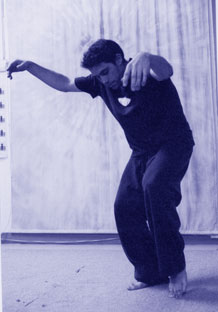
Imagine Reiki, Shiatsu, Kahuna, Rolfing, Yoga, Pilates, Tai Chi and Spiritual Healing all rolled into one technique, tailor made to suit your individual needs. That is exactly what Spontaneous Five Animals Play Qigong (Wuqinxi) is. It can treat a wide range of diseases, promote longevity and induce psychic abilities.
All one needs to do is focus their mind on certain acupuncture points on the body for a few minutes and the rest comes without h aving to consciously remember any steps or movements - making it a pure energy (chi) exercise.
The energy moves the body spontaneously according to each individual’s health needs. That means you will move your sor e back or neck in the most appropriate way for its recovery. You will find the right acupuncture points and apply Chinese massage on them without any prior knowledge of Chinese medicine, do spontaneous Reiki-like energy healing and imitate some of the (or all) 5 different animals (tiger, bear, deer, crane and monkey) to get rid of your ailments. The Chinese found, thousands of years ago, that imitating certain animals' movements is very beneficial to certain ailments, all stemming from pure observation and realisation that some animals are stronger than others, some are more agile, some faster, some see better, some hear better, live longer,...
Other spontaneous reactions that may occur during practice are: hitting or slapping certain body areas, shaking, jumping, whistling, humming, laughing, crying, reciting mantras, doing Tai Chi or Kung Fu like movements and grounding (ie lying still on the ground for a period of time allowing the Earth to pull the negative chi energy out the practitioner’s body thus assisting the healing process). For more information regarding Spontaneous Five Anim als Play Qigong, please refer to Qigong Chinese Health magazine – issue 1, page 10-15 or click on the link: Five Animals Play.
Sleeping Qigong
Sleeping Qigong is one of the m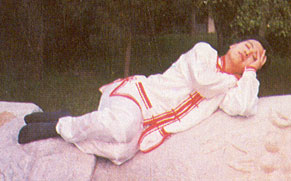 ost spiritual styles of Qigong. What that means is that, despite some gentle physical exercises practiced during the day, most of it is done at night and in bed – mentally. Like all other Ruan (or soft) styles of Qigong, Sleeping Qigong is capable of treating various illnesses but, unlike many others, it can soon turn its practitioner into a high level psychic and clairvoyant. What it deals with, from the very beginning, are our hidden abilities disguised as dreams, intuition, sixth sense etc. which we are all born with but, to many, they seem more like a computer program without the instructional manual. According to Sleeping Qigong the way to unlock that huge potential lies in our subconscious so, as long as we can establish a connection to it, the access to those hidden abilities is within our reach. Simply put, practicing Sleeping Qigong is not about building this most advanced computer because that would be impossible (God has already done that for us) but rather about finding that missing user manual.
ost spiritual styles of Qigong. What that means is that, despite some gentle physical exercises practiced during the day, most of it is done at night and in bed – mentally. Like all other Ruan (or soft) styles of Qigong, Sleeping Qigong is capable of treating various illnesses but, unlike many others, it can soon turn its practitioner into a high level psychic and clairvoyant. What it deals with, from the very beginning, are our hidden abilities disguised as dreams, intuition, sixth sense etc. which we are all born with but, to many, they seem more like a computer program without the instructional manual. According to Sleeping Qigong the way to unlock that huge potential lies in our subconscious so, as long as we can establish a connection to it, the access to those hidden abilities is within our reach. Simply put, practicing Sleeping Qigong is not about building this most advanced computer because that would be impossible (God has already done that for us) but rather about finding that missing user manual.
The good thing about Sleeping Qigong is that, no matter how busy we are during our active day, and no matter what we do with our working schedule, we all have to sleep, and that is when most of it is practiced. Not only can you use that time to practice one of the most powerful styles of Qigong (up until recent years secret and only known to a few) but it can turn you into a high level Qigong master, psychic and clairvoyant without anybody ever seeing you practice anything. It can dramatically improve your health, your relationships, your business, your mood and even your sexual performance. It can completely change your life for the better. For more information regarding Sleeping Qigong, please refer to Qigong Chinese Health magazine – issue 2, page 10-15 or click on the link: Sleeping Qigong.
After being kept s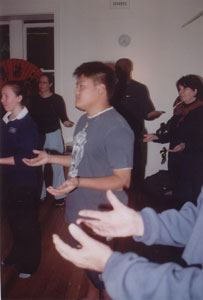 ecret for almost two thousand years Fragrant Qigong emerged in China in 1988 and in less than two years it became absolutely the most popular style of Qigong of all time, purely by word of mouth. It has never been advertised. In 1998 it was voted and officially declared by China’s national Qigong Association as No 1 Qigong among an assessed 50 most popular styles of that time.
ecret for almost two thousand years Fragrant Qigong emerged in China in 1988 and in less than two years it became absolutely the most popular style of Qigong of all time, purely by word of mouth. It has never been advertised. In 1998 it was voted and officially declared by China’s national Qigong Association as No 1 Qigong among an assessed 50 most popular styles of that time.
What they took into consideration, apart from the healing powers and the range of diseases each style exhibited, was also their practicality (ie. how simple/difficult its techniques were to practice), how much time each style would normally take to perform on a daily basis, who can practice it (eg men, women, the elderly, children, the bed ridden), what's the highest level one can reach practicing each style and many other criteria.
Well, Fragrant Qigong not only can treat almost all known and unknown disease but it is one of the easiest to learn and practice at the same time, it takes only about 10 -15 minutes for each session and it does not require any special breathing techniques or mind focusing. On the outside, indeed, it looks too simple to do anything but its results are more than impressive.
Its basic level is comprised of 15 simple arm movements that can be done either sitting or standing, while chatting or watching TV, listening to the radio or simply enjoying the view. Indeed sounds too good to be true yet it can do all of the above and much more. It is known to induce many psychic powers an d can even lead to spiritual enlightenment over time.
During practice, one may smell amazing sweet fragrances, feel tingling, itchiness, hot or cold (all signs of chi energy rebalancing) and many chronic illnesses can be treated in the process, some as quickly as after a couple of sessions. It is especially good for treating asthma, diabetes, ulcers, allergies, high blood pressure, skin conditions, hearing problems, migraines, depression, stroke and many other ailments. Sounds too good to be true yet it can do all the above and much more. It is known to induce many psychic powers and can even lead to spiritual enlightenment over time. For more information regarding Fragrant Qigong, please refer to Qigong Chinese Health magazine – issue 3, page 10-15 or click on the link: Fragrant Qigong.
Walking Qigong

Walking Qigong is best known in China as the ‘anti-cancer Qigong’. For the last thirty or so years it has been widely applied in the treatment of all sorts of malignant ailments with very favourable results. Much more than just 'favourable' as a matter of fact. Tens of thousands of sufferers of cancer and other serious illnesses such as leukemia, lupus, nephritis, cirrhosis of the liver have their health restored each year thanks to Walking Qigong. They are so confident in their results that Walking Qigong trainers will accept patients of any type of cancer and at any stage, as long as the person is able to stand on their feet and walk (even if all they can do is only make a few steps at a time). They claim that there is still a chance to conquer the disease even in such advanced stage and there are stacks of successful cases to prove it.
In China, Walking Qigong has not only been successfully used to treat malignant diseases, but it's also proved to be very effective in the treatment of many chronic conditions such as high blood pressure, rheumatism, hepatitis, allergies, heart disease, as well as to significantly reduce negative side effects caused by western medical treatments such as chemotherapy, radiation, operation, damage caused by anesthetics, antibiotics, hormones… It is not often seen in the west that a treatment for cancer improves other, unrelated, conditions so that a patient with say lung cancer ends up not only getting rid of his cancer but also of his rheumatic heart, improves his digestion, sight and blood pressure at the same time. He would be more likely to lose all his hair, become bloated, constipated, fatigued and depressed, and after all that, the cancer would still spread elsewhere, in majority of cases.
Well, with Walking Qigong not only did many patients get rid of their cancer but they got rid of many other illnesses along the way, to the point that some of them claim the cancer was ‘the best thing that has ever happened to them’. For more information regarding Walking Qigong, please refer to Qigong Chinese Health magazine – issue 4, page 10-15 or click on the link: Walking Qigong.
Sight Improving Qigong
As its name suggests, Sight Improving Qigong is primarily used to treat all kinds of sight problems and eye conditions. So, apart from the most common problems like short sightedness, long sightedness and astigmatism, it has also been known in China to successfully treat many other conditions of the eyes such as conjunctivitis, glaucoma, early stages of cataract, detached retina, internal bleeding of the eye, atrophy of the optic nerve… It has even worked in the cases of partial or total blindness, including congenital, considered by western medical standards as irreversible and incurable!
Sight Improving Qigong is unique in that it combines both internal and external Qigong to treat diseases. In other words, by practicing it, you rebalance internal chi and get rid of most energy blockages within the body. At the same time, by strengthening and accumulating your external chi energy, you can use the palms of your hands to project it into your own eyes and directly get rid of any energy blockages present there. For more information regarding Sight Improving Qigong, please refer to Qigong Chinese Health magazine – issue 5, page 10-15 or click on the link: Sight Improving Qigong.
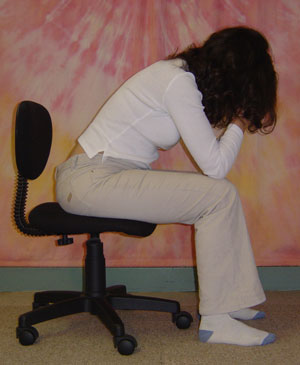
Weight Loss and Beauty Qigong
Weight Loss and Beauty Qigong – the name says it all! However, no sweating, no puffing, just sit and relax, and the kilos shed. It involves three special breathing/meditative exercises that effectively combat extra body weight and the problems associated with it. And it can do much, much more than ‘just’ improve your figure. It can dramatically improve the quality of your skin, hair, nails, as well as treat many health conditions eg. high blood pressure, high cholesterol, diabetes, gastritis, chronic hepatitis… It is a top beauty therapy and an excellent health and longevity practice at the same time. For more information regarding Weight Loss and Beauty Qigong, please refer to Qigong Chinese Health magazine – issue 6, page 10-15 or click on the link: Weight Loss and Beauty Qigong.
Relaxation Qigong
Relaxation Qigong is one o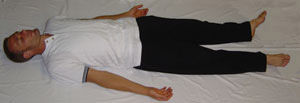 f the many static styles of Qigong that is simple, practical, can treat a wide range of diseases, greatly aids recovery from injuries, help with stress, insomnia, relieve pain and balance emotions. And the best part is - it can be done while sitting in an armchair or lying in bed and involves no movements whatsoever. In other words, it is a 100% mind exercise (in Qigong terminology “Jing Gong” meaning static style of Qigong as opposed to “Dong Gong” dynamic styles) that requires minimum space, a little bit of concentration and can be practiced by anyone who is mentally capable, regardless of their age, gender, physical ability and fitness levels, making it a great exercise for the bedridden. For more information regarding Relaxation Qigong, please refer to Qigong Chinese Health magazine – issue 7, page 10-15 or click on the link: Relaxation Qigong.
f the many static styles of Qigong that is simple, practical, can treat a wide range of diseases, greatly aids recovery from injuries, help with stress, insomnia, relieve pain and balance emotions. And the best part is - it can be done while sitting in an armchair or lying in bed and involves no movements whatsoever. In other words, it is a 100% mind exercise (in Qigong terminology “Jing Gong” meaning static style of Qigong as opposed to “Dong Gong” dynamic styles) that requires minimum space, a little bit of concentration and can be practiced by anyone who is mentally capable, regardless of their age, gender, physical ability and fitness levels, making it a great exercise for the bedridden. For more information regarding Relaxation Qigong, please refer to Qigong Chinese Health magazine – issue 7, page 10-15 or click on the link: Relaxation Qigong.
Eight Strands of Brocade Qigong
Eight Strands of Brocade Qigong (Ba Duan Jin) is one of the oldest Qigong styles, dating back over 3,000 years. It is a dynamic set of eight special exercises, gentle but firm, done with natural breathing and concentration, that promotes the flow of chi and blood, stretches the muscles, strengthens the joints and bones, improves coordination, flexibility, circulation, and is beneficial to all the systems and organs – central nervous system, digestive system, respiratory system, urinary tract…
To the onlooker it may appear that the practitioner is just stretching his/her limbs, bending and twisting their body but in reality every observed physical action is an attempt to favour the flow of chi in particular meridian(s). Thus the whole set is designed to rebalance all meridians and benefit all organs. This style is unique due to its stress on simplicity, repetition, relaxation, rhythm and harmony. For more information regarding Eight Strands of Brocade Qigong, please refer to Qigong Chinese Health magazine – issue 8, page 10-15 or click on the link: Eight Strands of Brocade Qigong.
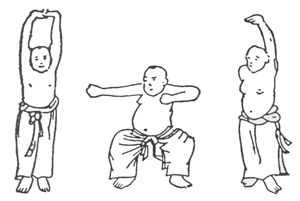
Longevity Self-Massage (Seated Eight Strands of Brocade Qigong)
Longevity Self Massage is also known in China as "Qigong Massage", “Bedside Eight Strands of Brocade” or “Seated Eight Strands of Brocade Qigong”. It is a set of gentle self massage techniques that covers the whole body, all major muscles and joints as well as many energy meridians and major acupuncture points. The First Strand of Brocade is known as “taking a dry bath” and consists of movements that resemble washing one’s body. It looks like the person is washing his arms, head, legs and body, but in reality, by using their palms and rubbing along those areas, they are clearing the chi blockages within the meridians (yin meridians on the inside and yang meridians on the outside of the limbs). Just look around and you’ll see that almost all species of the animal kingdom do the same, small and large (from ants to tigers) and they do it all the time. Some do it with their tongue, some with their legs and some even use a tree or help each other.
The remaining seven strands (or pieces) of brocade, on the other hand, are designed to improve one’s sight, hearing, sinuses, teeth, digestion, back... and to overcome insomnia, thus including the exercises and self massage techniques that cover the eyes, ears, nose, teeth and gums, belly, lower back and soles of the feet. And, of course, by improving the functions of all those systems and organs, one greatly improves his/her stamina, memory, concentration and even their mood along the way. For more information regarding Sitting Eight Strands of Brocade Qigong, please refer to Qigong Chinese Health magazine – issue 8, page 10-15 or click on the link: Qigong Massage.
Tai Chi Qigong (Shibashi)
Tai Chi is a martial art, Qigong is a practice of Qi (life force). Tai Chi Qigong (also known as Shibashi*) is a style of Qigong that has ‘borrowed’ the movements from Tai Chi thus it is beneficial to both Tai Chi as well as to Qigong practitioners. This dynamic form of Qigong is a set of 18 gentle, slow paced movements that is not only easy to practice but is even pleasing to the eyes. Invented in the late 1970’s by Lin Hou-Sheng, a well known Qigong master from Shanghai, this style is as popular in Malaysia, Singapore and Indonesia as it is in China. In recent years, slowly but surely, it has spread to other Asian countries as well as to the west.
Tai Chi Qigong is very effective in strengthening muscles and joints, releasing tension, reducing stress, energizing, uplifting, regulating blood pressure… It gives a great workout without the need to do anything fast and strenuous, can improve coordination of movements and is generally beneficial to mind, body and spirit. If done regularly over a period of time, it can bring many positive health results, even control body weight.
* In Mandarin ‘Shibashi’ means ‘18 movements’
Mobility Improving Qigong
As its name suggests, Mobility Improving Qigong is a dynamic form of Qigong that is specifically designed to improve one’s mobility and stamina. Aches, pains, stiffness of the joints, neck, back and other parts of the body, whether being the result of a sport injury, long term physical inactivity, arthritis or simply due to ageing, this Qigong can help. It consists of 6 sets of 6 exercises, each set targeting problems associated with one of the following areas: neck, shoulders, lower back, joints, tendons, soft tissues… It’s straight forward, easy to do, very effective.
Mobility Improving Qigong movements are slow but with the application of the so called 'nei jin' or ‘inner strength’ similar to a flood (ie the ‘slow water’) that takes away a bridge or a house in one go rather then fast movements that lack this sort of strength, such as waves which look powerful on the outside (as they crash into the shore with force) but even after hundreds of years do little damage. Practically speaking those special slow movements can separate tissues grown together around an injured joint due to inactivity over time and as a result make them mobile again or, at least, less restricted.
External Qigong
External Qigong is a common name for any Qigong technique that enables its practitioner to project his/her chi energy to others thus healing their diseases or, when faced with the danger of being physically attacked, to temporarily paralyse the opponent and escape to safety. In other words, it is a sign of reaching a higher level of practice rather than the practicing of a specific style. Many great styles of Qigong can enable its practitioners to develop such abilities eg. Five Animals Play Qigong, Sleeping Qi Gong, Fragrant Qigong, Sight Improving Qigong, to name only a few.
The focus of this particular style is to primarily develop wai qi (or the ‘external chi energy’) for healing purposes but, to do that, one has to first rebalance and strengthen their own nei qi (or the ‘internal chi energy’) and then, after at least a couple of years of daily training, they can they start projecting it on to other objects and people. It is quite rigorous and demanding and is only suitable for young and physically fit (and above all very patient) practitioners. On average, it takes about four years of diligent daily practice of minimum one hour to build to a level of being able to treat other people without damaging one’s own chi. Since one of its key exercises is done in the so called ‘riding horse stance’ (ma bu) an integral part of many Kung Fu styles, needles to say, it can be very beneficial to Kung Fu practitioners (of any style) as it can gradually take their skill to a higher level.
Shopping Basket
| Items: | 0 |
| Subtotal: | $0.00 |
Search by Keyword
Product Categories
info@qigongchinesehealth.com